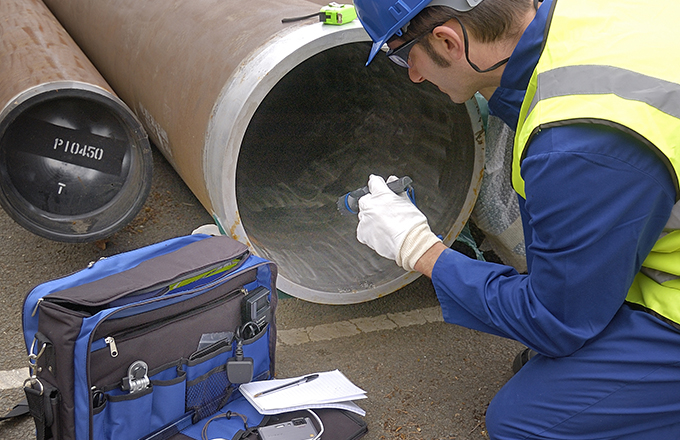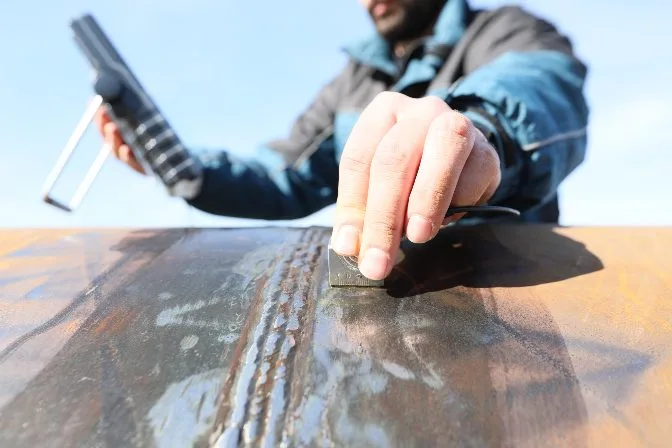Just How Welding Examination Functions: A Thorough Analysis of Techniques, Criteria, and the Duty of Assessors in Making Sure Structural Integrity and Safety
Welding examination is an important part in the construction and manufacturing markets, where the honesty of bonded joints is extremely important to safety and security and dependability. Examiners are tasked with not only reviewing weld top quality versus rigorous standards yet additionally analyzing complex codes and standards.
Value of Welding Inspection
Welding assessment is crucial in ensuring the stability and security of bonded frameworks, with researches showing that approximately 70% of architectural failings can be mapped back to poor welding techniques. This underscores the importance of systematic evaluation processes throughout the welding lifecycle, from preparation to completion. Effective inspection not just recognizes issues prior to they rise right into considerable problems however also guarantees compliance with industry requirements and policies.

The function of welding inspectors expands past simple quality control; they are vital in safeguarding public safety and decreasing responsibility for companies. By carrying out extensive evaluation procedures, firms can find issues such as insufficient combination, cracks, or too much porosity, which can jeopardize the total stamina of a welded joint. In addition, recurring training and certification of examiners add to the overall top quality assurance in welding procedures, promoting a society of security and quality.
Furthermore, welding evaluation plays a crucial role in preserving functional efficiency. Recognizing defects early in the procedure promotes timely restorative activities, reducing expensive rework and task delays. Eventually, a durable examination framework functions as a structure for sturdy and dependable welded frameworks, guaranteeing they fulfill both functional and security demands.
Usual Inspection Methods
Just how can one make certain the top quality of bonded joints throughout the assessment process? The application of various inspection methods is crucial in analyzing weld integrity and identifying possible flaws. Typical methods consist of Visual Assessment (VT), which is typically the very first line of defense, permitting examiners to identify surface area defects such as cracks, porosity, or insufficient combination by visually evaluating the welds.
Ultrasonic Testing (UT) is one more commonly utilized method, using high-frequency acoustic waves to identify internal issues within the weld. This approach is specifically effective for spotting concerns that are not visible to the nude eye. Radiographic Evaluating (RT) makes use of X-rays or gamma rays to develop pictures of the weld, enabling the recognition of volumetric flaws, such as voids or incorporations.
Magnetic Bit Testing (MT) and Liquid Penetrant Checking (PT) are likewise popular methods, focusing on surface area issues. MT depends on magnetic fields to disclose surface area and near-surface stoppages, while PT involves applying a fluid color to highlight flaws. Each of these techniques offers an unique function, making sure the extensive analysis of bonded joints and safeguarding architectural stability and safety.
Requirements for Reviewing Welds
The evaluation of welds is guided by a collection of well established standards that guarantee both functionality and safety in bonded frameworks. These requirements encompass different elements, consisting of weld size, account, and penetration, which have to adapt defined criteria. Conformity with industry codes, such as those set by the American Welding Society (AWS) or the American Culture of Mechanical Designers (ASME), is necessary in identifying the acceptability of a weld.

Weld metallurgy plays a vital function; the evaluation takes into consideration the fusion high quality between base and filler materials, along with heat-affected areas. Ultimately, the overall mechanical buildings, including tensile stamina and ductility, have to meet the requirements established for the certain application. Jointly, these criteria make sure that welds not just fulfill aesthetic criteria yet additionally perform reliably under functional problems.
Function of Welding Inspectors
A welding inspector's proficiency is critical in ensuring the honesty and top quality of bonded structures. These experts play a crucial function in the manufacture and building procedure by verifying that welding procedures abide by established specs and requirements. Their duties encompass a thorough variety of jobs, including visual assessment of welds, examining welding documentation, and carrying out non-destructive testing (NDT) methods such as radiographic or ultrasonic testing to identify problems.
Welding assessors are also responsible for analyzing welding codes and standards, making certain that the welders are certified which the materials used satisfy the required demands - Houston Welding Inspection. They must keep meticulous documents of examinations, which serve as paperwork of compliance and visit the website quality assurance. These assessors usually team up with designers and task supervisors to resolve any type of issues that develop throughout the welding process, supplying recommendations for corrective actions when necessary.
Along with technological abilities, reliable communication is essential, as welding examiners need to convey searchings for plainly to stakeholders and promote training and assistance for welders. Inevitably, their role is essential to preserving safety and security and integrity in welded frameworks, contributing dramatically to the total success of construction jobs.

Difficulties in Welding Inspection
What obstacles do welding inspectors deal with in their important function? The intricacies of modern-day welding strategies and materials present considerable difficulties for assessors charged with making sure compliance with safety standards and architectural integrity.
Furthermore, examiners typically come across variants in worksite problems that can impede inspection processes. Factors such as environmental problems, availability, and the physical state of the welded frameworks can make complex complete evaluations. Time constraints imposed by job schedules can further press examiners, potentially affecting the thoroughness of their assessments.
Additionally, the subjective nature of some assessment techniques can cause incongruities in analyses. For instance, visual examinations might vary based upon the assessor's experience and perspective. To mitigate these obstacles, the adoption of innovative non-destructive screening methods and standard methods comes to be vital - Houston Welding Inspection. Inevitably, conquering these challenges is vital for making sure the security and dependability of bonded structures across numerous sectors.
Conclusion
Welding assessment is important for preserving architectural stability and security in different markets. Through the application of varied assessment approaches and adherence to well-known requirements, examiners play a crucial my sources duty in recognizing issues and making sure conformity with industry requirements. The difficulties faced in this area highlight the requirement for constant enhancement in evaluation strategies and techniques. Inevitably, reliable welding inspection contributes dramatically to mitigating risks and enhancing the general dependability of welded structures.
Welding assessment is a vital part in the building and manufacturing industries, where the honesty of bonded joints is extremely important to security and reliability.Welding examination is important in making sure the stability and safety of bonded structures, with studies indicating that up to 70% of structural failures can be traced back to insufficient welding practices. Their duties incorporate a comprehensive range of tasks, including aesthetic assessment of welds, examining welding paperwork, and carrying out non-destructive screening (NDT) approaches such as radiographic or ultrasonic screening to identify defects.
Welding examiners are additionally accountable for interpreting welding codes and requirements, ensuring that the welders are qualified and that the materials used satisfy the necessary demands. Ultimately, effective welding examination adds dramatically to mitigating threats and boosting the total reliability of welded frameworks.